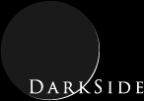Data Link
Data transmitted from the Earth will include operational commands and software updates. Data received at the Earth will include photos and video collected from the lunar surface, in addition to acknowledgements of received uplink data.
- Uplink: 30 kbps
- Downlink: 5 Mbps
Panoramic Images and Self-Images
20 still frames will be captured for each image from a 7.1 megapixel camera. The frames will be reassembled at Earth into a continuous panoramic image. Transmission will require 2.272 minutes per image.
High-Definition Video
Each 1-minute high-definition video clip will be captured at 1024×768 resolution at 60 frames per second. Transmission with MPEG-4 encoding will require 4.524 minutes per video clip.
Real-Time Video
Real-time video will be captured at 640×480 resolution at 30 frames per second. Transmission with MPEG-4 will require 4.42368 Mbps of the 5 Mbps downlink capacity.
Survey Data
Survey measurements captured from the rover will be encoded in a binary data format and multiplexed with the real-time video transmissions, using the remaining downlink capacity.
Earth-Lander Radio Frequency Link
Communication between Earth and the lunar lander will occupy the IEEE X band. (A FCC license request is pending.)
- Uplink: 100 kHz channel, centered at 7.5000 GHz
- Downlink: 10 MHz channel, centered at 8.0000 GHz
The uplink and downlink will both employ 4-symbol quadrature amplitude modulation (4-QAM), using root-raised-cosine (RRC) symbols with a roll-off factor of κ = 0.5. The data will be encoded with rate 2/3 turbo code. A go-back-N forward error correction scheme will be utilized with 64-bit blocks.
Uplink Transmission
A transmit antenna will be purchased and installed near Hat Creek, California. The antenna will be connected to a 2.4 m-diameter parabolic dish that operates in the X band.
Uplink Reception and Downlink Transmission
A 1.2 m-diameter parabolic dish that operates in the X band will be mounted on the lunar lander and connected to a full-duplex antenna for simultaneous uplink reception and downlink transmission.
Downlink Reception
Located in Hat Creek, California, the Allen Telescope Array consists of 42 active antennas (as of October 2007) which operate in the range of 0.5–11.2 GHz. (When complete, the array will total 350 antennas.) The SETI Institute of the University of California, Berkeley operates the array and has made it available for use in the Google Lunar X-Prize competition. The array will be used under the terms of this arrangement for downlink reception.
Lander-Rover Radio Frequency Link
The lunar lander and the rover will both employ a single half-wave dipole antenna with circular polarization. The same modulation scheme will be used as in the Earth-lander link, but no forward error correction or coding scheme will be used, as the main transmission buffer is on the lander for the Earth-lander link; instead, an extremely low bit error rate of 10-15 will be achieved.
- Uplink: 100 kHz channel, centered at 1.0000 GHz
- Downlink: 10 MHz channel, centered at 900.0 MHz
Estimated Expenses
| $185 | FCC License: Transmit-Only Antenna (details) |
| $232,950 | FCC License: 2 × Non-Geostationary Orbit Satellite System2 (details) |
| $2,795 | Earth Antenna (example) |
| $7,320 | Lander Antenna1 (example) |
| $375 | Earth Turbo Encoder/Decoder (example) |
| $7,500 | Lander Turbo Encoder/Decoder1 (example) |
| $100,000 | Miscellaneous RF Hardware1 |
| $351,125 | Total |
| 1Vendor price multiplied by 20 to estimate space certification cost | |
| 2Separate licenses needed for rover and lander; closest FCC category match to actual application used | |

